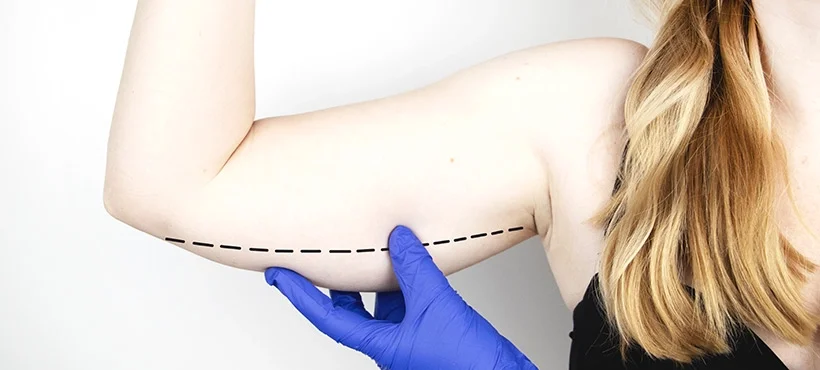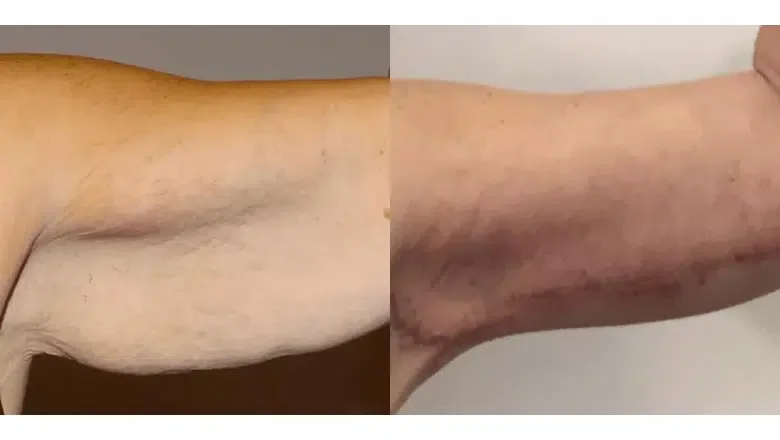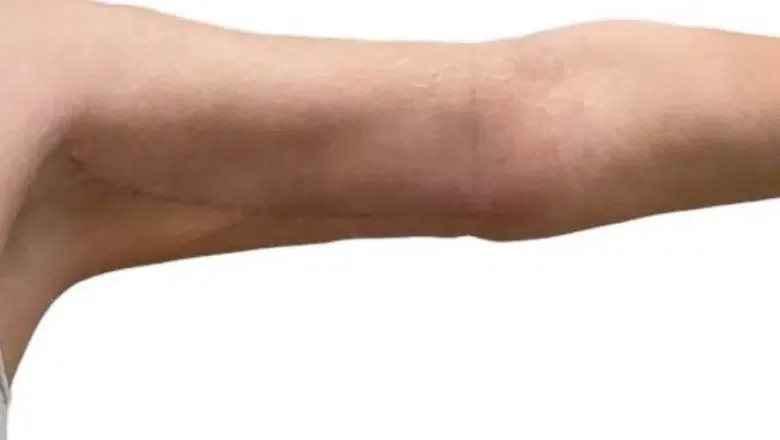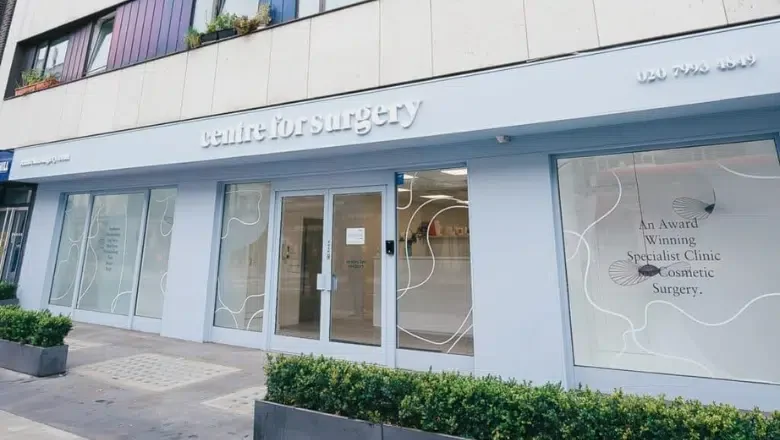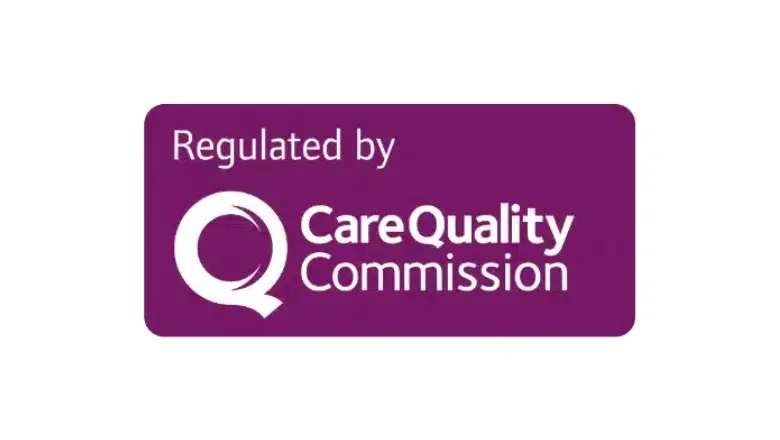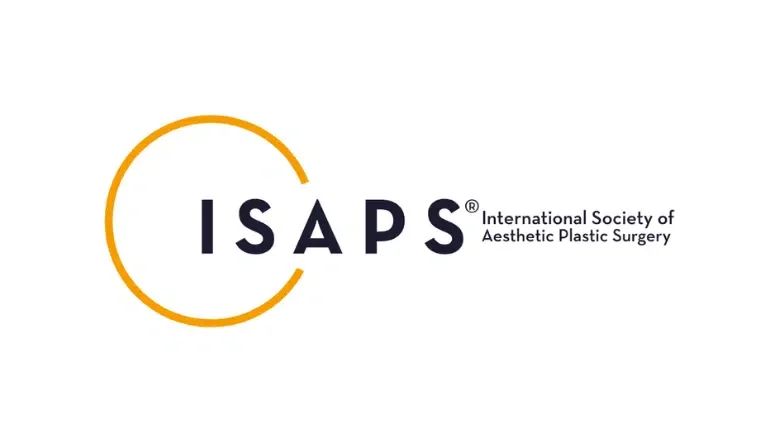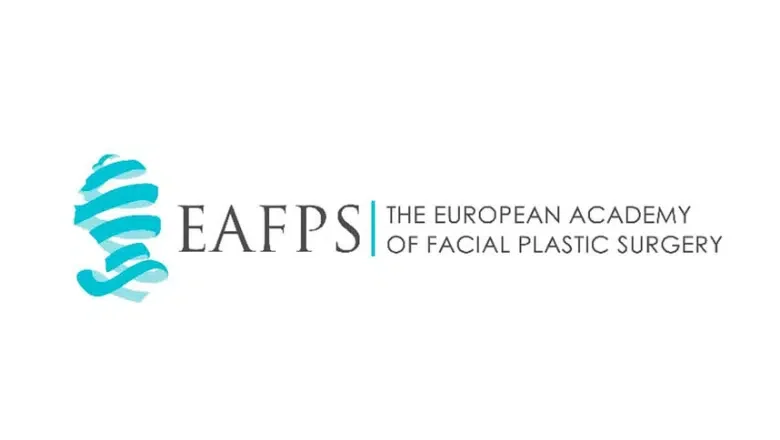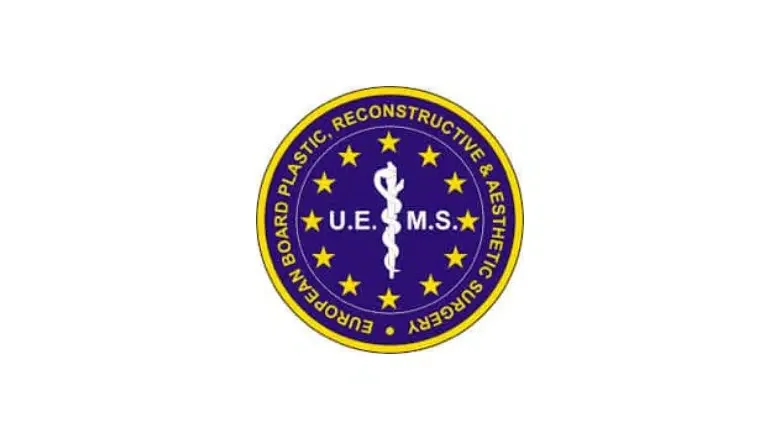Arm Lift (Brachioplasty) in London
Loose or sagging skin on the upper arms is a common issue, particularly after individuals experience a substantial or rapid weight loss. This problem can also become more pronounced as a person ages. The condition, colloquially referred to as “bingo wings” or “bat wings,” is characterised by an excess of skin in the upper arm area that, unfortunately, is not easily rectified through exercise alone.
In such circumstances, one of the most effective remedies is a surgical procedure known as brachioplasty, also referred to as an upper arm lift. This operation is specifically designed to address the issue of droopy arm skin, helping individuals regain a more toned and youthful appearance.
RELATED: Arm Lift FAQs – Q&A about Brachioplasty Surgery
Among the many clinics providing post-weight-loss surgical solutions, Centre for Surgery stands out. Our institution is not only a hub for individuals seeking to refine their appearance further after significant weight loss, but it is also home to a diverse array of highly trained plastic surgeons in the UK.
Our exceptional team of surgeons possesses a wealth of experience and a proven track record in their respective fields, ensuring the best possible patient outcomes. With their expertise, the centre provides comprehensive care for those dealing with the aftermath of dramatic weight loss, including the challenge of excess skin in areas such as the upper arms.
What is an Arm Lift?
Brachioplasty, also known as an upper arm lift, is a form of cosmetic surgery specifically designed to address the issue of sagging skin and excess fatty tissue in the upper arm area. The objective of this procedure is not only to eliminate the surplus skin and fat but also to improve the overall shape and contour of the arm.
This surgical intervention is significant in its scope. It aims to mitigate the sagging or drooping appearance that can occur as a result of substantial weight loss or the natural ageing process, which often leads to a decrease in skin elasticity. The term ‘Brachioplasty’ is derived from the Greek words ‘brachion’ meaning ‘arm,’ and ‘plassein’ meaning ‘to form,’ hence it effectively means ‘reshaping of the arm.’
During a Brachioplasty procedure, an incision is typically made either on the inside or back of the arm, depending on individual needs and the surgeon’s assessment. Through this incision, the surgeon can remove excess skin and fat, often with the assistance of liposuction. Subsequently, the remaining skin is tightened and sutured back into place, resulting in a firmer, more youthful, and toned appearance of the upper arm.
Although Brachioplasty can significantly improve the aesthetic appearance of the arms, it is a major surgical procedure that requires careful consideration and should ideally be performed by a skilled and experienced plastic surgeon. Patients must also be prepared for a recovery period after surgery and should follow all postoperative care instructions to achieve optimal results.
See Brachioplasty Before and After Results
During your comprehensive consultation at the Centre for Surgery, you will have the opportunity to view numerous before-and-after photos of our past arm lift patients. This will provide you with a realistic understanding of the results you can expect. We also encourage you to visit our arm lift photo gallery online for additional examples of our work in this area.
Case 1:
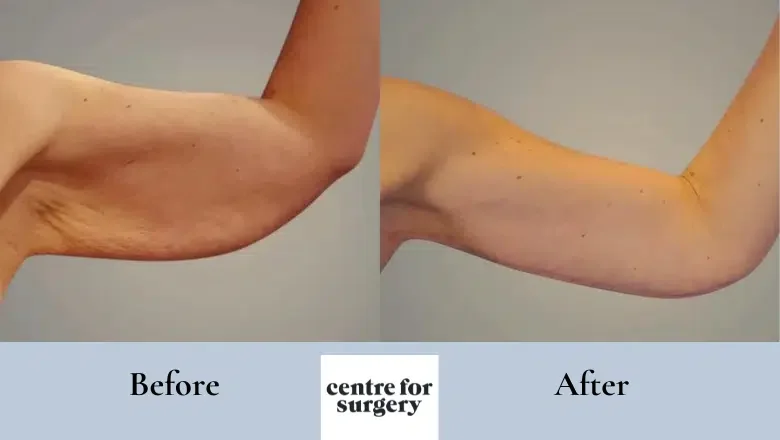
Case 2:
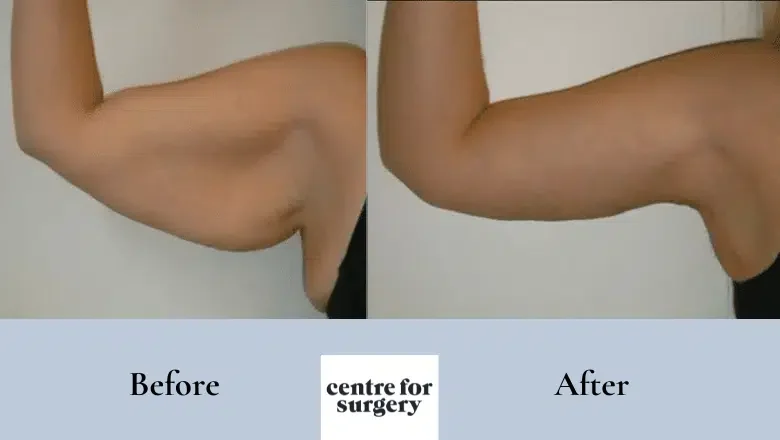
Case 3:
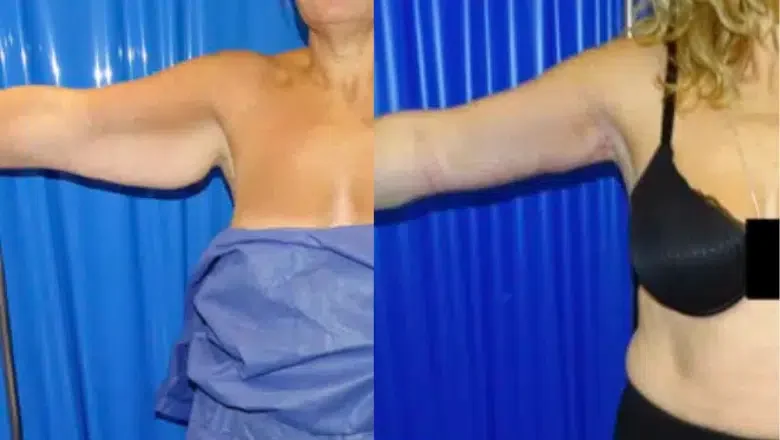
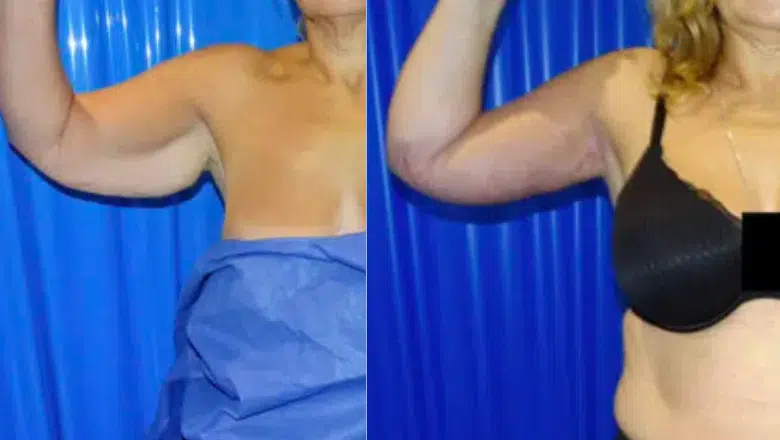
Case 4:
Case 5:
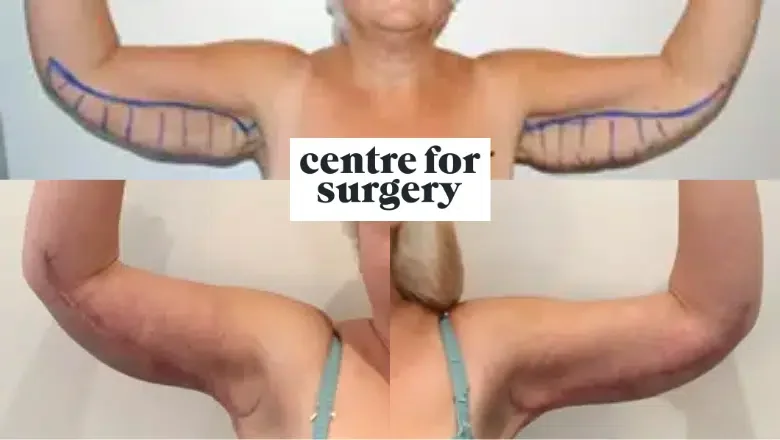
Case 6:
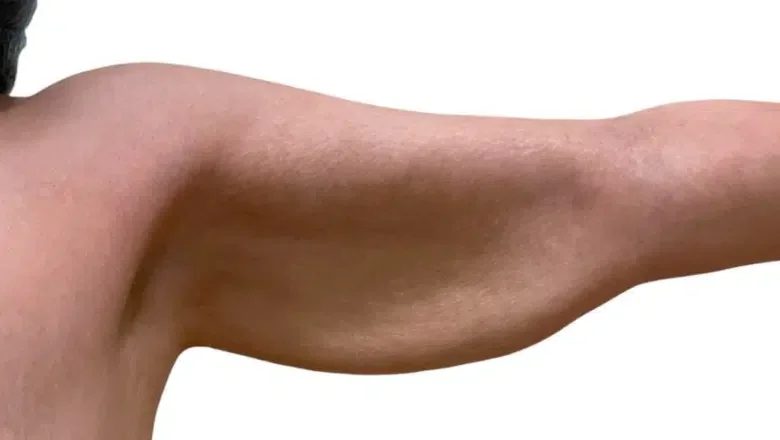
Case 7:
We take pride in the high level of satisfaction our arm lift patients express after their procedures. The outcome of arm lift surgery typically results in toned and youthful-looking upper arms, giving our patients the confidence to wear sleeveless attire freely.
Benefits of Upper Arm Lift Surgery
Brachioplasty, is specifically designed to address the issue of excess skin in the upper arm area. This intervention doesn’t yield immediate results; instead, the full benefits become evident over time as the body heals and adapts after surgery. There are several key advantages associated with undergoing an upper arm lift procedure:
Enhanced Arm Firmness
One of the most prominent benefits of Brachioplasty is the noticeable increase in firmness of the upper arms. This procedure removes excess skin and fat, allowing the remaining skin to be tightened and resulting in a more toned and firm appearance.
Elimination of Sagging Skin
A significant objective of upper arm lift surgery is to address sagging skin. By excising this excess, droopy skin, the procedure effectively eliminates the problem, resulting in smoother and more youthful-looking arms.
Strategically Placed Scars
While any surgical procedure will inevitably leave some scarring, the upper arm lift surgery is designed in such a way that the scars are typically positioned on the inner part of the arms, making them less noticeable. This strategic placement helps minimise the scars’ visual impact while maximising the aesthetic outcome of the procedure.
Improved Arm Contour
Upper arm lift surgery significantly enhances the overall contour of the arms by removing excess skin and fat, while also tightening the remaining skin. This can lead to a more proportionate appearance, helping to boost self-confidence and comfort in various types of clothing.
Ideal Candidates for Brachioplasty Procedure
When considering a Brachioplasty procedure, or an upper arm lift, it’s crucial to understand whether you’re an appropriate candidate for the surgery. This is typically assessed during an in-depth consultation at the Centre for Surgery, where potential patients can discuss their concerns and expectations with a qualified surgeon.
The ideal candidate for a Brachioplasty procedure should meet the following criteria:
Overall Health
Candidates should be in good physical and mental health. This is essential to ensure a smooth surgical process, a successful recovery, and the capacity to handle any stress or anxiety that might arise from undergoing a major surgical procedure.
Non-Smoking Status
Ideally, candidates should be non-smokers. Smoking can significantly impair the healing process after surgery. If a candidate does smoke, they should be willing to quit at least six weeks before and after the procedure to reduce any potential complications and promote optimal healing.
Presence of Sagging Skin
Candidates for brachioplasty typically have significant sagging skin in the upper arm region that causes aesthetic concerns, physical discomfort, or mental distress. This surgery is specifically designed to address this issue.
Realistic Expectations
Candidates should have a clear and realistic understanding of what brachioplasty can and cannot achieve. While the surgery can significantly enhance the appearance and contour of the upper arms, it won’t necessarily lead to “perfect” arms.
Personal Motivation
Ideal candidates should seek surgery for their own reasons and not fit into societal trends or pressures. The decision to undergo this procedure should be self-motivated and not influenced by others’ opinions or expectations.
Informed Awareness
Candidates must understand the potential risks and complications associated with Brachioplasty. This ensures that they’re making a fully informed decision about the procedure.
Preparing for an Arm Lift
In the lead-up to your arm lift surgery, your surgeon will provide detailed instructions on how to prepare adequately for the procedure. These measures are crucial for ensuring a smooth surgical process and optimal post-surgical healing.
Vitamins and Medications
Your surgeon may suggest that you take specific vitamins or medications in preparation for the surgery. These can help boost your immune system and promote healing post-surgery. Always follow your surgeon’s specific instructions regarding these supplements.
Smoking Cessation
If you’re a smoker, you’ll need to cease smoking a minimum of four weeks before and after your surgery. Smoking can significantly impair circulation and disrupt the healing process, which could lead to complications during and after the procedure.
Avoid Certain Medications and Supplements
You may be instructed to refrain from taking certain medications, including aspirin and anti-inflammatory drugs, for two weeks before and after your surgery. These medications can potentially increase the risk of bleeding during the operation. Likewise, certain herbal supplements may also need to be avoided as they can interfere with anaesthesia or cause excessive bleeding.
Types of Arm Lift
Arm Liposuction
Arm liposuction is the ideal technique for contouring the arms for those with good skin elasticity. Arm liposuction results in minimal scarring, and the recovery time is significantly quicker than that of a traditional brachioplasty. Those with significant, redundant skin, often from previous weight loss, will not be ideal candidates for arm liposuction. Younger patients with minimal skin laxity in the upper arms are perfect candidates. Arm liposuction can help to achieve a more toned arm contour.
Mini Arm Lift or Mini Brachioplasty
A mini arm lift is a minimally invasive version of a traditional full brachioplasty, addressing moderate degrees of skin laxity. The incision for a mini arm lift is located in the armpit area and is, therefore, well concealed compared to a full brachioplasty. Patients can quickly wear short-sleeved clothing without visible scarring. The postoperative discomfort after a mini arm lift is much less than that of a Brachioplasty. Liposuction is often combined with a mini arm lift to remove fat deposits in the upper arms. Patients who want to avoid a scar going down the arm and have lesser degrees of skin laxity may be ideal candidates for a mini arm lift.
Your surgeon may also wish to combine the BodyTite/Morpheus8 combination with a mini arm lift to extend the benefits of partial skin excision. In this case, the procedure would be performed with TIVA anaesthesia.
Traditional Brachioplasty or Full Arm Lift
Brachioplasty surgery aims to remove the maximum amount of excess skin and fat in the upper arm area, thereby tightening the skin and significantly improving the upper arm contour. The incision for a Brachioplasty is located on the inner side of the upper arm and runs from the armpit to the elbow. Although the scar burden can be significant, the scar is often well-positioned on the inside of the arm. Brachioplasty surgery is the most commonly performed arm lift procedure for individuals with moderate to severe skin laxity, usually resulting from significant weight loss.
Extended Brachioplasty
Patients who have undergone massive weight loss, whether from bariatric surgery or weight loss through diet and exercise, may be candidates for an extended brachioplasty procedure. Often, after massive weight loss, the resulting skin laxity can be very significant and extend beyond the upper arm to the side of the chest. A traditional brachioplasty cannot correct the deformity caused by weight loss. The incision for an extended brachioplasty extends from the elbow to the side of the chest wall, effectively addressing skin redundancy resulting from massive weight loss. A significant improvement in upper arm and chest wall contour can be achieved.
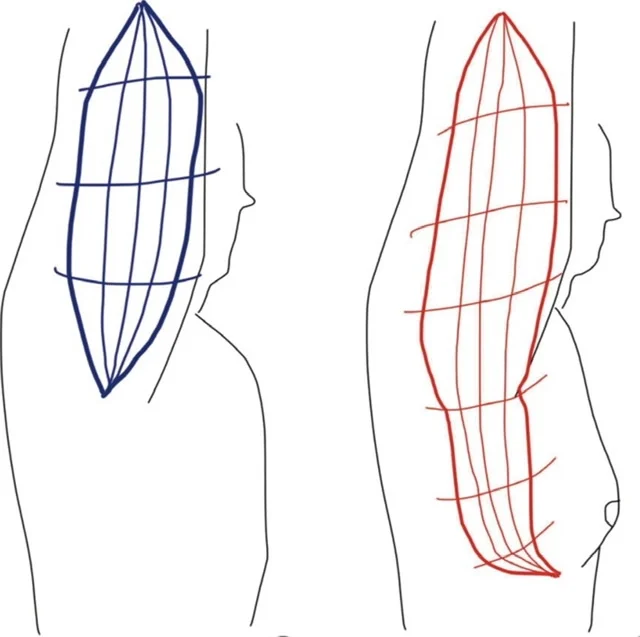
Modified Brachioplasty
The modified brachioplasty is similar to a traditional brachioplasty in that excess skin and fat are surgically removed to improve the upper arm contour in patients who have undergone significant weight loss. Modified incision brachioplasty differs from the traditional technique in that the scar is shaped in a different manner. The modified incision is more curved and is positioned along the bicep muscle for improved concealment. The modified incision brachioplasty is ideal for patients concerned about scar placement and who prefer the scar to be located in the inner arm rather than along the lower part of the upper arm.
BodyTite Arm Lift
If you are not keen on the idea of having scars from arm lift surgery, Centre for Surgery also offers a ‘scarless arm lift‘ utilising the innovative BodyTite platform. A BodyTite arm lift utilises minimally invasive bipolar RF using specially designed cannulas to tighten the skin and soft tissues, along with Morpheus8 RF microneedling. By using both BodyTite and Morpheus8, your surgeon can address mild to moderate skin laxity in a minimally invasive manner, eliminating the downtime associated with traditional full brachioplasty. A BodyTite arm lift can be performed under local anaesthetic (with or without oral sedation) in properly selected candidates.
RELATED: BodyTite Arm Lift
As we age and lose muscle tone, we may not like what we see in the mirror. If you extend your arm, you may notice a flap of skin hanging down from it. In an ideal world, a balanced diet and regular exercise could correct this. But for some people, that is not enough. An arm lift, also known as brachioplasty, can enhance the beauty and appearance of the arm.
During a brachioplasty, the surgeon makes an incision in the arm. Excess skin is removed, and excess fat may also be removed as needed. Afterwards, there will be pain and swelling, which can take several weeks to go away. There will also be a scar. Generally, the scar will run down the underside of the upper arm. Sometimes, a surgeon will do a mini arm lift. This procedure leaves a scar in the armpit that is less noticeable.
Arm Lift Surgery Procedure
You may experience saggy arms for various reasons, such as weight loss or ageing. This can cause you to feel self-conscious, particularly when wearing shorter clothes. While exercise helps keep the muscles tight, skin and fat can be stubborn and droopy.
Arm Lift Step-By-Step
STEP 1: For a full arm lift, a curved incision is designed to run along the lower margin of the arm from the elbow to the armpit. The degree of correction of skin laxity and the size of the arms depend on the design of the incision and the length of the incision.
STEP 2: The surgeon carefully removes any excess fat and skin, and dissects beneath the skin in a gentle, near-bloodless manner.
STEP 3: The excess and redundant skin is surgically removed, followed by a close approximation of the wound edges using temporary surgical clips. This is then followed by liposuction to fine-tune the arm’s size.
STEP 4: Dissolvable sutures are placed along the approximated skin margins to ensure a cosmetically acceptable scar.
STEP 5: A specialised compression garment is applied to the arms to support the incisions and reduce postoperative swelling.
An arm lift will remove this excess skin and fat while also tightening the tissues, giving the arm a smoother, more youthful appearance. The arm lift procedure involves undergoing liposuction to remove any excess fat. Next, the excess skin is removed and sutured shut.
After the arm lift procedure, you will have a scar running down the underside of your arm. Although this scar will be more noticeable after surgery, it will fade gradually over time. If you do not want a scar, you may wish to consider a mini arm lift, as the scar will be limited to the underarm area, making it less noticeable.
To help the healing process, you will be asked to avoid smoking. You will also have to avoid blood-thinning medications.
Recovery After Brachioplasty
The recovery period following arm lift surgery, also known as Brachioplasty, is a crucial phase that can significantly impact the final results of the procedure. During this time, it’s normal to experience some degree of discomfort and swelling, which typically subsides by the end of the second week of the recovery period, which generally lasts between four and six weeks.
RELATED: Recovery After Arm Lift Surgery – Top Tips
Compression Garment After An Arm Lift
The surgeon will apply a compression garment to the upper arms at the end of the Brachioplasty procedure. It is recommended to wear the garment continuously for the first three weeks, which may be longer if your surgeon recommends a longer duration. The arm lift compression garment should only be removed before showering. The sterile waterproof dressings should protect the wounds from moisture. The compression garment should be immediately reapplied once your shower is complete.
You should not bend your elbows for 24-48 hours after the arm lift procedure. In one week, you will see one of our postoperative nursing team for a wound check and a change of dressings. Specialised brown tape may be applied at this stage to optimise wound healing and scar cosmesis. You should avoid strenuous physical activity for the first two weeks. Light physical activity is acceptable four weeks after arm lift surgery.
Draining Tubes
Proper care must be taken with the drainage tubes, which are usually in place for the first week after surgery. These tubes help to remove excess fluid and reduce swelling.
Lifestyle Habits
During the recovery period, it’s crucial to avoid smoking and consuming alcohol. Both these habits can interfere with the healing process and increase the risk of complications, particularly when combined with antibiotics and other prescribed medications.
Over-the-Counter Painkillers
Initial swelling, discomfort, and bruising are normal and can be effectively managed with over-the-counter pain relievers. The discomfort usually decreases significantly by the end of the first two weeks.
Time Off Work
If your job involves physical effort, taking at least two weeks off work is advisable to ensure your body has ample time to heal without added strain or pressure on the surgical site.
Avoid Strenuous Activities
It’s also essential to refrain from strenuous exercises and activities during the initial recovery period, as these can potentially complicate the wound-healing process.
Limit Arm Movement
In the first two weeks after surgery, avoid raising your arms, as this can place undue pressure on the incisions and impact the healing process.
Rest and Relaxation
Prioritise rest during your recovery period. This allows your body, especially your arms, to heal correctly so you can fully enjoy the results of your arm lift procedure.
How to Improve The Appearance of Arm Lift Scars
Many patients are concerned about the appearance of scars after arm lift surgery, but this has become less of a concern with modern surgical techniques. Most patients accept the trade-off between achieving a dramatically improved upper contour and the potential for a long scar along the upper arm. Our surgeons utilise advanced surgical techniques to achieve a straighter-looking scar, located along the inside of the arm, resulting in a well-concealed scar that is not easily visible to others, even when wearing short-sleeved shirts.
Arm lift scars vary from one patient to another, and there are several factors which can influence the degree of scar formation:
- Positioning of scar
- Skin colour
- History of hypertrophic or keloid scars
- Exposure of healing incisions to strong sunlight
All arm lift incisions leave scars due to the procedure of removing excess skin and fat. Modern methods of scar management help to improve the appearance of scars. It is vital to wear the postoperative garment as instructed by the surgeon in combination with specialised postoperative brown tape along the arm lift incisions. This protocol helps to prevent stretching of the scar and reduce the incidence of red and raised scars over time.
Four weeks after surgery, your surgeon may recommend applying silicone gel sheets once the incisions have fully healed, which will help further optimise scar cosmesis. It is essential to keep the incisions out of direct sunlight and to use a sunscreen with an SPF of 30 or higher, applied to the scars. You should avoid direct sunlight exposure to the treated areas for six months after arm lift surgery.
Risks and Complications of Arm Lift Surgery
With any cosmetic surgery procedure, there are recognised medical risks. Arm lift surgery is no different. The patient needs to adhere to all pre-operative and post-operative instructions to ensure a smooth recovery and minimise the risk of complications developing. Your surgeon will thoroughly discuss the possible risks with you during your consultation.
Possible risks that you are exposed to include infection, fluid accumulation, haematoma, skin necrosis, poor scar healing, and blood clotting. Your surgeon will also discuss with you the chances of revisional surgery, which is different from post-surgery follow-ups and future surgery. In the period leading up to the Brachioplasty procedure, you will be asked to give up smoking if you are a smoker. Aspirin can act as a blood thinner, and you will be advised to discontinue its use.
Potential Complications of Arm Lift Brachioplasty
- Anaesthetic risks
- Postoperative haemorrhage
- Seroma or haematoma
- Delayed wound healing
- Hypertrophic scarring
- Requirement for a revision procedure
Brachioplasty – Upper Arm Lift Surgery London Cost and Prices – How much is a Brachioplasty in London?
The cost of an Arm Reduction Surgery, also known as Brachioplasty, in London, UK, can vary considerably based on several factors. These variables include the specific type of procedure, the desired outcome, and the amount of time required in the operating theatre.
Patient’s Specific Requirements
The primary driver of the cost of arm lift surgery is the unique needs of each patient. Some patients may require liposuction in addition to skin removal, while others may only need a certain amount of skin to be excised from the arm area. The extent of the procedure directly influences the overall cost.
Complementary Procedures
An arm lift is sometimes performed in conjunction with other surgeries to achieve a more harmonious and aesthetically pleasing body contour. Additional procedures will also be factored into the total cost if necessary.
Associated Fees and Expenses
The cost of the procedure also includes the fees for the anaesthetist and surgeon, as well as the costs associated with using the medical facility. Furthermore, any necessary pre-operative medical tests, post-operative compression garments, and prescription medications will also contribute to the final price.
Health Insurance Considerations
The extent to which your private health insurance can cover the costs of the surgery depends mainly on the reasons for undergoing the procedure. If the surgery is sought purely for cosmetic reasons, it’s unlikely that brachioplasty will be covered. However, if the excess skin is causing health issues due to substantial weight loss, there may be a possibility of claiming some of the surgery costs from your insurer.
Always remember that price should never be the determining factor when choosing your cosmetic surgery provider. We believe that safety and quality of service should be your top priority and instil in you the confidence that everyone on our team will look after you to the best of their ability – before, during, and after your procedure.
Arm lift Specialists at Centre for Surgery
What is included in my treatment package?
- As many preoperative consultations with your surgeon as you like to make sure the procedure is right for you
- Treatment at a specialist day surgery facility recently rated ‘Good’ by the CQC
- Enhanced same-day discharge with the added benefits of recovering in your own home
- 24/7 clinical support from your surgeon for the first 48 hours, and our expert postoperative support team
- Your very own dedicated patient coordinator
- In-depth preoperative medical assessment to make sure you are fully fit for the brachioplasty procedure
- Our exceptionally high standards of postoperative care have been described as ‘outstanding’ by the CQC, with regular telephone and face-to-face checks by our expert postoperative support team.
RealSelf Top Doctors
RealSelf’s Top Doctor status is awarded to fewer than 10% of the RealSelf community of doctors. This status is earned by consistently achieving high patient satisfaction (as rated in RealSelf reviews), receiving excellent feedback on expert answers to patient questions, and investing significant time in Q&A and other doctor-related activities. RealSelf’s top doctors are rated among the best surgeons in the United Kingdom.
Our surgeons are highly skilled in all types of arm lift surgery, resulting in a significantly improved upper arm contour, which reflects their deep expertise in body contouring surgery. We have a strong philosophy of establishing a good doctor-patient relationship to facilitate excellent outcomes after arm lift surgery.
During your consultation, your surgeon will carefully listen to understand your lifestyle and treatment goals, which is essential for formulating the correct treatment plan for you. Your medical history and any current medicines you may be taking will also be reviewed. All patients need to be fully informed about all the available arm lift surgical techniques so they can make a decision based on their preferences.
Your surgeon will be able to answer any questions you may have and address any concerns you may have during your consultation. If you are keen to see before-and-after photos, your surgeon may be able to show a range of photos of patients who have undergone similar brachioplasty treatments to give you an idea of the potential results that can be achieved. The pros and cons of Brachioplasty surgery will also be discussed in detail, concerning your anatomy and medical history.
If arm lift surgery is advised as a suitable procedure for correcting arm contour, the surgeon will design a bespoke treatment plan. Our patient coordinators will act as your point of contact throughout your patient journey. Your patient coordinator will be able to provide you with the cost of your procedure and will be in regular contact with you should you have any questions about any aspect of the arm lift procedure.
FAQs
-
Can you eliminate loose skin under the arms?It is quite common to have loose skin under the arms, but fortunately, there is a solution available in the form of arm lift surgery. This procedure can effectively treat and remove the excess skin, providing you with a more toned and contoured appearance.
-
Are flabby arms considered normal?Yes, having flabby arms is entirely normal. Many individuals experience this condition due to factors such as genetics, weight fluctuations, or ageing. It's important to remember that body shape and composition can vary widely among different people, and flabby arms are a common occurrence for many individuals.
-
What causes fat upper arms?Fat accumulation in the upper arms can be attributed to several factors. One primary cause is weight gain, as an increase in overall body fat percentage can result in fat storage in various areas, including the upper arms. Additionally, certain genetic predispositions may contribute to the accumulation of fat in this particular region.
-
Is there a plastic surgery procedure for addressing flabby arms?Absolutely! If you're looking to address flabby arms and achieve a more defined and sculpted appearance, an arm lift surgery is an excellent option. This surgical procedure is specifically designed to remove excess skin and fat from the upper arms, resulting in a tighter and more contoured aesthetic.
-
Why are my arms so flabby?Flabby arms can stem from a variety of causes. One significant factor is genetics, as some individuals may be predisposed to storing excess fat in their arms. Weight gain and fluctuations can also contribute to flabbiness, as well as a higher body fat percentage. In some cases, loose skin may also be a contributing factor. Regardless of the cause, an arm lift surgery can effectively address and correct flabby arms.
-
How can batwing arms be fixed?To address batwing arms, an arm lift surgery or upper arm reduction surgery is commonly recommended. This surgical procedure involves the removal of excess skin and fat from the upper arms, resulting in a more toned and youthful appearance. The specific technique employed may vary depending on individual circumstances and desired outcomes.
-
How is bat wing removal achieved through surgery?Bat wings can be effectively eliminated through a surgical arm lift. During the procedure, the surgeon will make carefully placed incisions to access the underlying tissue. Excess skin and fat are then removed, allowing for a more sculpted and contoured appearance of the arms. The surgical technique used may vary depending on factors such as the amount of excess tissue and the patient's unique anatomy.
-
What Areas Does An Arm Lift Treat?Arm lift or brachioplasty surgery is designed to address the contour of the upper arm area but neighbouring areas can also be treated for a comprehensive rejuvenation.
Additional areas include:
- Armpit / axillary region
- Upper back as part of a bra line back lift
- Breast as part of a breast lift
- Back of the elbow
- The forearms -
What is a mini arm lift?A mini arm lift is a surgical procedure aimed at improving the appearance of the arms when there is a minor amount of excess skin and fat. This less invasive technique typically involves smaller incisions and focuses on targeting specific areas of concern. A mini arm lift may be suitable for individuals who require less extensive correction or who desire a more limited intervention.
-
How can armpit fat be reduced?Addressing armpit fat is an integral part of arm lift surgery. This procedure not only contours the arms but also targets and eliminates excess fat in the armpit region. By removing the surplus fat and tightening the surrounding tissues, an arm lift surgery can help achieve a more streamlined and aesthetically pleasing armpit area.
-
Will I need an arm lift after weight loss?It is common for individuals who have experienced significant weight loss to consider or require an arm lift surgery as part of their post-weight loss body contouring procedures. Losing a substantial amount of weight can often result in loose skin around the arms, which may not respond to exercise or non-surgical methods. In such cases, an arm lift can be an effective solution to eliminate excess skin and achieve a more proportional and toned appearance.
-
What The Techniques for Performing Arm Lift Surgery?There are three main types of arm lift surgery and the exact technique chosen depends on the amount of skin laxity and size of the arm. Your surgeon will aim to use the most minimally invasive technique where possible. This is so to minimise the risks of prolonged surgery and also the recovery time required following the surgery.
A mini arm lift also known as a mini brachioplasty utilises an incision located in the arm and which resembles the shape of an ellipse. The incision can easily be extended to form a T shape incision which extends down the arm. A mini brachioplasty is most suitable for patients with lesser amounts of skin laxity and minimal fat deposits in the upper arm. The scar burden following a mini brachioplasty is less compared with a full brachioplasty. The incision is placed on the inner aspect of the arm.
A full brachioplasty involves the formation of 2 incisions along the inner aspect of the arm which forms a large ellipse of tissue for surgical removal. This type of brachioplasty is suitable for patients with moderate to severe skin excess and is often combined with liposuction to remove excess fat deposits and for contouring of the upper arm. When the skin is brought together after excision the arm will be significantly tightened. Being placed on the inner arm, the incision is less visible when wearing short sleeved clothing. A full brachioplasty is the most commonly performed type of arm lift and is carried out under TIVA anaesthesia as a day case.
An extended brachioplasty procedure is performed when there is severe soft tissue laxity often after massive weight loss whether from Bariatric surgery or diet and exercise. The incision extends from the elbow beyond the armpit and onto the side of the chest wall. Excess fat is removed through liposuction and redundant skin is surgically removed followed by resuturing the skin edges to tighten the arm. The scar burden after an extended brachioplasty can be significant but the improvement in shape and contour can be dramatic for suitably selected patients. -
Have any celebrities undergone arm lift surgery?There have been speculations in certain magazines suggesting that several
celebrities, such as Jennifer Aniston, Kelly Ripa, and Demi Moore, have undergone arm lift surgery. -
What steps should I take before undergoing arm lift surgery?To prepare for arm lift surgery, there are several important steps to follow:
Complete any necessary lab tests as advised by your surgeon to ensure you are in good health for the procedure.
Avoid taking any blood-thinning medications, as they can increase the risk of complications during surgery. Your surgeon will provide specific instructions regarding which medications to avoid.
Refrain from smoking and drinking alcohol for at least two weeks before the surgery. Smoking can interfere with the healing process, and alcohol can affect anesthesia and increase bleeding risks.
Maintain a healthy lifestyle by eating nutritious meals and staying physically active. Good overall health can contribute to better surgical outcomes. -
What should I pack for arm lift surgery?When packing for arm lift surgery, consider including the following items:
Loose and comfortable clothing that is easy to put on and remove, as your arms may be sensitive or bandaged after the procedure.
Compression garments recommended by your surgeon. These garments provide support and promote proper healing.
A water bottle to stay hydrated during your hospital stay.
Some light snacks to have before or after the surgery, as you may not have a full meal before the procedure.
Toiletries such as toothbrush, toothpaste, and any personal hygiene items you may need.
Slippers or comfortable footwear to wear during your hospital stay. -
How can I prepare myself for arm lift surgery?To adequately prepare for arm lift surgery, consider the following steps:
Ensure that your overall health is optimal. Follow a balanced diet, exercise regularly, and get sufficient rest to promote healing.
Avoid smoking and drinking alcohol, as they can interfere with the surgical process and post-operative recovery.
Discontinue any blood-thinning medications as advised by your surgeon, as they can increase the risk of bleeding during and after surgery.
Complete any necessary lab tests as recommended by your surgeon to assess your health status before the procedure.
Communicate openly with your surgeon, addressing any concerns or questions you may have about the surgery and recovery process. -
What is the maximum weight for undergoing an arm lift?There is no specific maximum weight limit for undergoing an arm lift procedure. However, it is generally recommended to be within 2-3 kilograms of your target weight range before the surgery. If you are overweight, it is advisable to consult with your surgeon to discuss your options and determine the most appropriate course of action for your specific circumstances.
-
Is weight loss necessary before an arm lift?In order to achieve the best results from an arm lift or any body contouring procedure, it is generally recommended to be at or near your goal weight. Losing any excess weight before the surgery can help optimise the outcome and ensure that the improvements achieved during the procedure are not compromised by subsequent weight loss. Additionally, being at a stable weight can help minimise the risk of complications and promote proper healing.
-
How long should I quit smoking before arm lift surgery?It is strongly advised to quit smoking for a minimum of four to six weeks prior to arm lift surgery. Smoking can have detrimental effects on the healing process, including reduced blood flow and oxygen supply to the tissues, increased risk of complications, and delayed wound healing. By quitting smoking, you can significantly improve your body's ability to heal, decrease the risk of complications, and optimise the overall outcome of the surgery.
-
Is arm lift considered a major surgery?Yes, an arm lift is considered a major surgical procedure. It is typically performed under general anaesthesia, meaning you will be asleep throughout the surgery. The complexity and duration of the procedure make it a significant undertaking that requires careful planning and post-operative care.
-
Is an arm lift worth it?If you are bothered by sagging or excess skin on your arms and desire a more contoured and toned appearance, an arm lift can be a worthwhile body contouring procedure. It can help you achieve your aesthetic goals and enhance your self-confidence.
-
What are the different types of arm lifts?Arm lifts can be classified into several categories, including:
Traditional Arm Lift: This procedure involves the removal of excess skin and fat from the upper arms, typically from the underarms to the elbows.
Extended Arm Lift: In an extended arm lift, excess skin and fat are removed from a larger area, extending to the chest and back region.
Hidden Arm Lift: This technique utilises incisions placed in inconspicuous locations, such as along the inner arm or in the armpit fold, to minimise visible scarring
Liposuction: Liposuction may be performed as a standalone procedure or in combination with an arm lift to remove excess fat and contour the arms. -
What does a full arm lift involve?During a full arm lift, the surgeon removes excess skin and fat from the underarms, armpit area, and along the length of the arm, including the elbow region. The remaining skin is then carefully draped to create new contours and a more improved appearance. This comprehensive procedure addresses the entire arm, resulting in a more sculpted and toned look.
-
What is a mini arm lift?A mini arm lift, also known as a limited-incision arm lift or a mini brachioplasty, focuses on re-sculpting the arm tissue and removing sagging or loose skin. This procedure is commonly performed when there is a lesser amount of excess skin and fat to address. It is a less invasive option compared to a full arm lift and can provide noticeable improvements in arm contour and appearance.
-
How long does an arm lift surgery typically take?On average, arm lift surgery can take approximately three to four hours to complete. The exact duration may vary depending on the extent of the procedure, the complexity of the case, and any additional techniques or treatments being performed alongside the arm lift.
-
How much skin can be removed during an arm lift?The amount of excess skin that can be removed during an arm lift varies from patient to patient. It depends on factors such as the individual's unique anatomy, the degree of sagging or excess skin, and the desired outcome. During your consultation, your surgeon will assess your specific case and discuss the potential extent of skin removal.
-
Will I lose weight after undergoing an arm lift?An arm lift is not primarily a weight loss procedure. While there may be a small reduction in weight due to the removal of excess skin and fat during the surgery, the overall weight loss is usually minimal. The primary goal of an arm lift is to improve the shape and contour of the arms rather than achieve significant weight loss. It is essential to have realistic expectations and understand the intended outcomes of the procedure.
-
Which type of arm lift is suitable for me?Determining the most suitable type of arm lift for you requires a comprehensive evaluation by a qualified plastic surgeon. During a consultation, your surgeon will assess various factors, including the amount of excess skin and fat in your arms, your aesthetic goals, and your overall health. Based on this assessment, they will recommend the specific type of arm lift procedure that best suits your needs and desired outcomes.
-
What is the level of pain experienced after an arm lift?After an arm lift surgery, you can expect to experience mild discomfort for the first one to two weeks. Your surgeon will provide you with over-the-counter painkillers to manage any pain. While swelling may be uncomfortable, it is rare to require or find relief from pain relief medication. In some cases, patients may experience temporary nerve pain, which usually resolves on its own.
-
Can I sleep on my side after an arm lift?No, it is recommended to avoid sleeping on your side or stomach for approximately three weeks after the surgery. Instead, sleep on your back with your arms elevated on pillows to minimise swelling and promote proper healing.
-
When can I start lifting my arms after an arm lift?You can begin lifting your arms four weeks after the surgery and gradually resume any active range of motion exercises as guided by your surgeon. It is essential to follow their instructions to ensure a safe and successful recovery.
-
How long does it take for arm lift scars to fade?Most arm lift scars will fade completely or significantly lighten within six to nine months after the surgery. However, the scar healing process can vary for each individual, and it may take longer, around 12 to 18 months, for some patients to achieve optimal scar appearance.
-
How long should I wear a compression garment after an arm lift?It is advisable to wear a compression garment for a period of three to six weeks following the arm lift surgery. Your surgeon will provide specific instructions based on your unique case and healing progress.
-
What is the expected healing time for an arm lift?The healing time for an arm lift can vary from person to person. In general, most individuals experience a complete recovery within three to four weeks after the surgery. However, it is important to note that each individual's healing process may differ.
-
How long does numbness last after an arm lift?Numbness typically lasts for the first week after the arm lift surgery. Sensation gradually returns as the healing process progresses, but it may take some time for full sensation to be restored.
-
How long does it take for the arm lift incision to heal?The incisions from the arm lift surgery usually take about two to three weeks to heal. It is crucial to follow postoperative care instructions provided by your surgeon to promote proper wound healing and minimise the risk of complications.
-
How much time should I take off work for an arm lift?To ensure a complete and successful recovery, it is advisable to take approximately two to three weeks off from work. This allows sufficient time for healing and reduces the risk of straining the surgical site.
-
What is the recovery time for a mini arm lift?Most patients recover within approximately two weeks after a mini arm lift. However, individual healing times may vary, and it is important to follow your surgeon's guidance and attend postoperative appointments for proper monitoring and care.
-
How can I reduce scar tissue after an arm lift?To minimize the appearance of scars after an arm lift, it is important to follow postoperative instructions diligently. Wear surgical tapes as instructed for at least three months after the surgery. Keep the wound from drying out excessively or becoming overly moist. Avoid prolonged sun exposure, and maintain a healthy diet while staying well-hydrated to support the body's natural healing process.
-
What can I do to reduce swelling after an arm lift?To reduce swelling after an arm lift, it is recommended to wear a compression garment for the advised duration of three to six weeks. Additionally, elevating your arms with the help of pillows and performing gentle exercises as instructed by your surgeon can help alleviate swelling.
-
When can I return to work after an arm lift?Most individuals can return to work approximately two to three weeks after the arm lift surgery. However, the exact timing may vary depending on the nature of your job and your individual healing progress.
-
When can I stop wearing a compression garment after an arm lift?The duration of wearing a compression garment after an arm lift can vary, but it is generally advised to wear it for three to six weeks following the surgery. In some cases, your surgeon may recommend wearing the garment for a longer duration to provide additional support to the healing tissues and minimise swelling.
-
When can I start driving after an arm lift?In most cases, patients can resume driving approximately seven to ten days after the arm lift surgery. However, this timeline can vary depending on your individual recovery and the specific instructions provided by your surgeon.
-
When does the pain go away after an arm lift?With the regular use of prescribed painkillers, the discomfort experienced after an arm lift surgery is typically mild to moderate. Most patients find that the pain gradually subsides within the first week or two of the recovery period.
-
What is the typical recovery time after an arm lift?The average recovery time after an arm lift surgery is approximately three to four weeks. During this period, it is crucial to follow all postoperative care instructions, attend follow-up appointments, and gradually resume normal activities under the guidance of your surgeon.
-
Is arm lift recovery painful?While the recovery from an arm lift surgery may involve some discomfort, it is typically not considered excessively painful. The use of prescribed pain medication, along with proper postoperative care, helps manage any discomfort. Most patients describe the recovery phase as mildly uncomfortable rather than significantly painful.
-
Can I stand up straight after an arm lift?Yes, you can generally stand up straight immediately after the arm lift surgery, once the effects of anesthesia wear off. It is important to listen to your body and avoid any sudden or strenuous movements that could strain the surgical area. If you experience any discomfort or limitations, it is recommended to consult with your surgeon for guidance.
-
What is the best scar treatment after an arm lift?The best scar treatment after an arm lift may include the use of surgical tapes and medical-grade silicone gels. These products help minimise scar appearance and promote optimal healing.
-
What is the recovery time after an arm lift?The recovery time after an arm lift surgery can vary, but most individuals experience a complete recovery within three to four weeks.
-
How should I sleep after an arm lift?After an arm lift surgery, it is recommended to sleep on your back with your arms elevated on pillows. This position helps reduce swelling and provides support to the healing tissues.
-
How long will the arms remain swollen after a brachioplasty?Most of the swelling in the arms subsides within six to eight weeks after a brachioplasty. However, individual experiences may vary, and it is normal to have some residual swelling that gradually resolves over time.
-
Can I go home on the same day as arm lift surgery?Yes, you will be able to go home later the same day. Your surgeon will assess your condition and make the appropriate decision to ensure your safety and well-being.
-
How long after brachioplasty can I start exercising?Typically, you can begin light exercises and activities approximately four to six weeks after brachioplasty surgery. Consult with your surgeon before initiating any exercise regimen. They will provide specific guidelines based on your progress and the nature of your activities, ensuring that you resume physical activities safely and gradually to avoid complications.
-
Does the fat in the arms return after an arm lift?While an arm lift removes excess skin and fat from the arms, it is important to note that the remaining fat cells can still expand if you gain significant weight after the surgery. If you experience substantial weight gain, it is possible for fat to accumulate in the arms again, leading to a fuller appearance. Maintaining a healthy lifestyle, including regular exercise and a balanced diet, can help prevent excessive weight gain and maintain the results achieved through the arm lift surgery.
-
What happens if weight is gained after an arm lift?If you gain a significant amount of weight after an arm lift, it can impact the appearance of your arms. The arms may become fuller and lose some of the contouring achieved through the surgery. Additionally, the increased weight can stretch the skin, potentially resulting in the development of stretch marks.
-
Do "dog ears" disappear after an arm lift?In some cases, after an arm lift surgery, a slight puckering or excess skin can be visible near the incision site, resembling "dog ears." However, this is typically a temporary condition and tends to resolve on its own over time as the tissues heal and settle. In most cases, the appearance of dog ears diminishes within a few months after the surgery. If they persist or cause discomfort, consult with your surgeon, as they may recommend non-surgical treatments or further intervention to address the issue.
-
Is an arm lift considered a safe procedure?Yes, an arm lift is generally considered a safe procedure when performed by a qualified and experienced plastic surgeon. As with any surgical procedure, there are potential risks and complications, but these can be minimised by selecting a skilled surgeon and following pre- and post-operative instructions.
-
What can cause necrosis after an arm lift?Necrosis, the death of tissue, is a rare complication that can occur after an arm lift. Several factors can contribute to necrosis, including excessive hot or cold therapy applied to the surgical area, infection, smoking, or excessive tension on the wound.
-
What are the causes of bruising after an arm lift?Bruising is a common occurrence after any surgical procedure, including an arm lift. The trauma and manipulation of tissues during surgery can lead to blood vessels breaking, resulting in bruising. Additionally, if there is an associated liposuction component, it can contribute to further bruising. Following pre-operative instructions, such as avoiding blood-thinning medications as recommended by your surgeon, can help minimise bruising. The extent and duration of bruising can vary among individuals, but it typically resolves over time as the body heals.
-
How much does an arm lift surgery cost?The cost of an arm lift surgery can vary depending on several factors, including the surgeon you choose and the specific type of arm lift you require. To obtain an accurate estimate, it is best to contact our team who can provide you with detailed information based on your individual case.
-
Are arm lifts covered by the NHS?In general, arm lift surgery for purely cosmetic reasons is not typically covered by the NHS (National Health Service). However, if you have experienced significant weight loss and are facing functional or medical issues due to excess skin, you may be eligible for skin removal or weight loss plastic surgery procedures covered by the NHS.
-
Does private health insurance cover arm lift surgery or brachioplasty?Private health insurance coverage for brachioplasty or arm lift surgery may vary depending on your specific insurance policy. Generally, private health insurance does not cover arm lift surgery unless it is deemed medically necessary by your surgeon or doctor. Patients who have undergone significant weight loss may have some coverage options for skin removal procedures under private health insurance.
-
How Should I Best Prepare For The Arm Lift Surgery?For best results, all patients should make sure to follow all preoperative and post-operative instructions given to them by their surgeon.
The following are recommended actions to take:
- For 6 weeks beforehand, it is highly recommended to stop smoking as active smoking is associated with a number of risks including delayed wound healing which could result in wound infection. You should also stop smoking for at least four weeks after the procedure.
- You should also avoid aspirin and all medicines containing aspirin for at least one week prior to the arm reduction procedure. These medicines interfere with the bodies natural blood clotting process.
- For 6 hours before the arm lift procedure, you should refrain from eating any food or any type of drink apart from sips of clear fluid (water and tea/coffee without added milk) which is allowed for up to 2 hours before the procedure. You will be having a deep sedation anaesthetic and your anaesthetist will want you to have an empty stomach before the procedure to reduce the risk of anaesthetic complications occurring. -
Are The Results of An Arm Lift Permanent?As long as patients keep to a stable weight then the result of arm lift surgery should be permanent. With the ageing process the laxity of the skin increases and the taut feeling after having had a brachioplasty may be less with time. As long as patients maintain a stable weight with a good diet and regular exercise then the results of arm lift surgery will last many years.
-
Am I Suitable For An Arm Lift?Ideal candidates for arm lift surgery include:
- Patients who have localised areas of fat in the upper arms
- Significant skin laxity
- Untoned arm appearance caused by a combination of excess fat and lax skin
- Arms which look larger which are disproportionate to the overall body shape
- ‘Bingo wings’
What To Expect
The Consultation for Brachioplasty
When you have a consultation with your surgeon for brachioplasty surgery, a number of measurements are taken of the arms where fat and skin is to be removed and an assessment will be made of the soft tissue quality. Those who have good skin elasticity may will be a good candidate for liposuction alone. For patients with more significant degrees of skin laxity then an arm lift may be more appropriate. The surgeon will also give information on the location of the incisions for the arm lift and also whether the arm lift is to be combined with liposuction or BodyTite.
High-resolution photos will be taken and your surgeon may also use computer digital imaging. Your surgeon will take time to discuss the important risks and potential complications of arm lift surgery and what you can expect in the postoperative period.
The surgeon will also take a full medical history which includes previous operations, current list of medicines taken and any potential allergies. This information will be used to decide on your fitness for the brachioplasty procedure. If you are deemed to be a suitable candidate for arm lift surgery then we would recommend to spend a period of time to reflect on all the information given. We always recommend a minimum of a '2 week cool off period' for to weigh up your options.
All our prospective patients are more than welcome to have as many follow-up consultations after their initial consultation to make sure you are fully empowered with all the information to make an informed decision for proceeding with arm lift surgery at Centre for Surgery in London.
Before Your Procedure
Once you have decided that arm lift is right for you, our preoperative assessment team will be in contact to prepare you for brachioplasty surgery.
The following are recommended actions to take:
- For 6 weeks beforehand, it is highly recommended to stop smoking as active smoking is associated with a number of risks including delayed wound healing which could result in wound infection.
- You should also avoid aspirin and all medicines containing aspirin for at least one week prior to the arm reduction procedure.
- For 6 hours before the arm lift procedure, you should refrain from eating any food or any type of drink apart from sips of clear fluid (water and tea/coffee without added milk) which is allowed for up to 2 hours before the procedure.
On The Day of Your Procedure
Please aim to arrive for your arm lift procedure at the confirmed time. One of our nursing team will admit you for the procedure and will carry out a number of tasks including checking your blood pressure and other vital signs including pulse and temperature and then getting you changed into single-use clinic wear. The anaesthetist will then come in to assess you to make sure you are fit for TIVA anaesthetic and will also prescribe a number of pre-medications which are given by your nurse to help your recovery after the brachioplasty procedure. You will then be seen by your surgeon who will confirm the procedure to undertaken and you will sign the informed consent form. Skin marking and photos may be taken at this point.
Arm lift is very commonly performed in conjunction with liposuction at Centre for Surgery and is carried out under TIVA general anaesthesia as a day case. Mini arm lift surgery can be carried out under local anaesthetic in selected patients. The procedure takes approximately 1-3 hours to carry out. During arm lift surgery, your surgeon will make incisions in the marked areas of the arms. The procedures starts with liposuction of the arms followed by the brachioplasty skin excision step. The fat tissue is surgically removed using specialised cannulas to contour the marked body areas before closing the skin with dissolvable sutures.
Once you have woken up from the TIVA anaesthetic, our nurses will closely monitor you for 1-3 hours afterwards to make sure you make a full recovery. You will be given a fruit juice drink or a hot drink as you prefer to build up your energy levels. Once you are assessed as fit for discharge, you will require a responsible adult escort to take you home in a car or taxi and to look after you for at least the first 24 hours after surgery.
The arms will be placed in a compression garment after surgery to reduce bruising and swelling. You may feel quite stiff and it is common to experience mild discomfort during any arm movements in the first few days after surgery. The surgeon uses dissolvable sutures to avoid the inconvenience of suture removal. The bruising should settle down after about 3 weeks.
After Your Procedure
After your arm lift procedure, our dedicated postoperative support team are available round the clock to answer any questions or concerns you may have. Our team will call you regularly for the first 2 weeks after your procedure to make sure your pain levels are well controlled and your healing is progressing as normal.
The recovery after brachioplasty is usually very straightforward with minimal discomfort that can be effectively controlled with tablet painkillers and the majority of our patients are very comfortable by the end of week 1. Your doctor may recommend a period of approximately one week off work. You should minimise any excessive physical activity for the first 2 weeks after surgery to help with the healing of the incisions and reduce swelling.
You will be required to wear a supportive compression garment for a full 6 weeks to make sure healing is optimal, and so that scars heal with best results.
You will attend for a postoperative check up with one of our nursing team at 7-10 days to review your surgical wound sites and ensure proper healing is taking place. Recommendations on treatments for scar healing may be given for optimal cosmesis. At 6 weeks you should begin to see your final results and you will see your surgeon for a comprehensive review and make sure your results are in line with your expectations.

